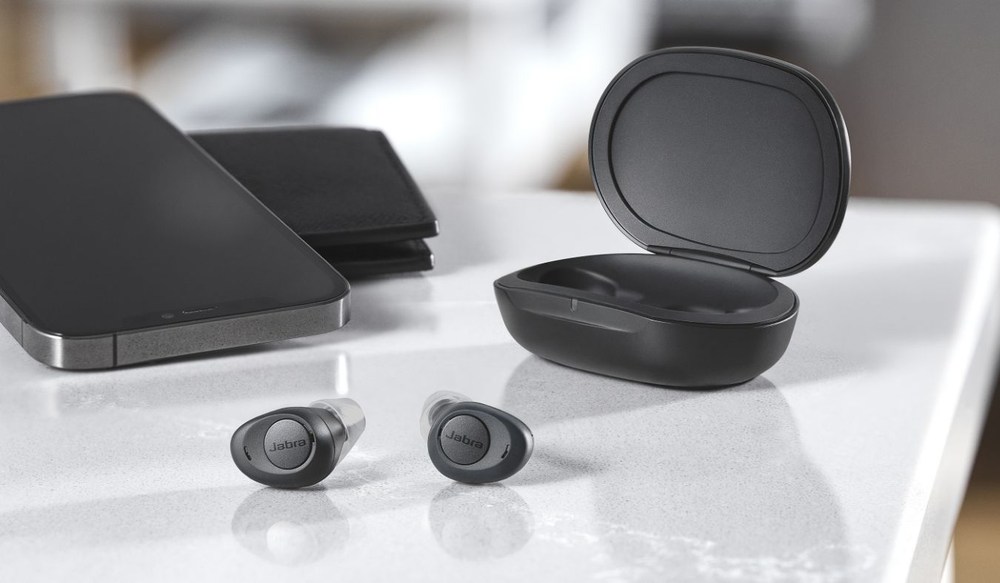Tips for Managing Hearing Aids During Fall Activities
Fall brings plenty of reasons to spend time outside, from weekend hikes to

By: admin | August 28, 2024
Technological innovation is always on the move in the world of hearing health. One significant advancement is Bluetooth hearing aids. They offer more than just sound amplification. These devices provide a new level of connectivity, changing the way you interact with the world. It’s not just about hearing better, but about experiencing sound in a more personalized and convenient way. This breakthrough means managing your hearing loss doesn’t mean giving up quality or comfort.
To fully appreciate Bluetooth hearing aids, it’s helpful to understand Bluetooth technology. At its core, Bluetooth is a wireless communication system that allows devices to exchange data over short distances, creating personal networks known as PANs (Personal Area Networks).
This technology is key to many modern devices, from smartphones and computers to home appliances and now, hearing aids. The beauty of Bluetooth lies in its ability to create seamless connections between different devices. This makes tasks like listening to music or taking calls easier and more accessible.
When it comes to hearing aids, Bluetooth technology offers a significant upgrade in wearer experience. By connecting your hearing aids directly with various electronic devices, you can enjoy high-quality sound delivered straight into your ears. This eliminates the need for additional headphones or earbuds and provides a more personalized listening experience.
The evolution of hearing aids has been nothing short of impressive. From the basic ear trumpets of the 18th century to the compact, digital devices we have today, the progress has been astounding. The introduction of Bluetooth technology into this mix has accelerated this progression, offering an unprecedented level of convenience and functionality.
Bluetooth’s impact on hearing aids is undeniable. It has changed the way you interact with your environment, transforming your hearing aids from simple sound amplifiers into dynamic tools for connectivity. With Bluetooth-enabled hearing aids, you can directly stream audio from your phone, television or other devices straight to your ears – a feature that enhances not only your listening experience but also your overall quality of life.
Now, let’s look at how Bluetooth hearing aids actually work. These advanced devices operate using a system of wireless connectivity that links your hearing aids with a variety of electronic devices.
Bluetooth hearing aids work by converting digital audio signals from your connected device into sounds you can hear. This is achieved through a process known as digital signal processing. An interesting fact is that approximately 80% of all new hearing aids sold are now wireless, many of which use Bluetooth technology, showing its growing popularity and effectiveness in the field of hearing health.
Bluetooth technology in hearing aids isn’t just a fancy add-on. It’s a feature that offers real benefits, enhancing your listening experience and making everyday tasks simpler and more enjoyable. From streaming your favorite music to taking phone calls directly through your hearing aids, Bluetooth technology opens up a world of possibilities.
One of the biggest advantages is the improved sound quality. With Bluetooth hearing aids, you can stream audio directly from your devices into your ears, ensuring clear and crisp sound every time. Plus, it eliminates the need for additional headphones or earbuds. Another benefit is the ease of use. Connecting your hearing aids to various devices via Bluetooth is typically straightforward and wearer-friendly, making it an accessible feature for everyone to enjoy.
Not all devices are compatible with Bluetooth hearing aids. It’s important to check if your current electronic devices can support this technology before investing in a pair of Bluetooth-enabled hearing aids. Here’s a simple checklist for you:
Bluetooth hearing aids also work well with many modern televisions and music systems. But again, it’s always best to double-check before making a purchase decision. Remember, the goal is to enhance your listening experience, so ensuring compatibility is key!
Bluetooth hearing aids are not just about providing better sound quality; they’re about giving you control over your sound experience. These devices allow you to customize your listening according to your preferences and needs.
One of the most significant benefits of Bluetooth hearing aids is their ability to personalize sound settings. You can adjust the volume, change the audio balance and even select specific sound profiles for different environments. This means that whether you’re in a crowded restaurant or a quiet park, you can optimize your hearing aids for the best possible listening experience.
Here are some ways Bluetooth hearing aids allow you to tailor your sound experience:
Navigating through noise-heavy environments can often be a challenge for those with hearing loss. However, Bluetooth technology in hearing aids is changing this narrative, enabling clearer communication even in bustling settings.
Bluetooth hearing aids work by streaming audio directly from the source to your ears, minimizing the impact of background noise. This feature is particularly useful in crowded places like restaurants or parties, where multiple sounds can often overlap. By focusing on the sound you want to hear and reducing other noises, Bluetooth technology helps you stay connected and engaged in every conversation.
Bluetooth hearing devices come with notable advantages but also some drawbacks. One key issue is battery life, as Bluetooth functionality can drain batteries faster, requiring more frequent replacements or recharges. Connectivity problems can also arise, with potential challenges in pairing with certain devices or maintaining a stable connection, especially in environments with multiple Bluetooth devices.
Additionally, the complexity of Bluetooth hearing aids might be a concern. Setting up and using the associated apps can be more involved compared to traditional hearing aids, potentially overwhelming wearers who prefer simpler solutions. Despite these issues, discussing your needs with an audiologist can help determine if Bluetooth hearing aids are the right choice for you.
Maintaining the best performance of your Bluetooth hearing aids is important to ensure they continue serving you effectively. Regular upkeep and understanding how to troubleshoot common issues can make a significant difference in your overall wearer experience.
Firstly, keep your devices updated. Just like any other technology, Bluetooth hearing aids also require regular software updates for optimal functionality. These updates often include improvements in connectivity and sound quality, so it’s worth taking the time to install them when available. Secondly, clean your hearing aids regularly. Dust or earwax can interfere with the performance of your devices, so regular cleaning is essential.
Lastly, familiarize yourself with common troubleshooting steps for Bluetooth connectivity issues. This could include knowing how to reset the connection between your hearing aids and device or understanding how to check battery levels accurately. If problems persist, don’t hesitate to consult with a hearing specialist for assistance.
When choosing a Bluetooth hearing aid, consider factors like sound quality, battery life and device compatibility. It’s also important to think about comfort and ease of use, as these devices will be part of your daily life.
Remember that every individual’s hearing loss is unique. Therefore, it’s important to consult with an audiologist who can guide you towards the most suitable choice for you. They can provide valuable advice based on your specific needs and lifestyle.
When discussing Bluetooth technology with your local audiologist, it’s important to ask specific questions to ensure you make the most of your hearing aids’ connectivity features. Begin by inquiring about compatibility: ask if your hearing aids are compatible with the Bluetooth devices you frequently use, like smartphones, tablets or televisions. This will help you understand which devices you can seamlessly connect to your hearing aids.
Next, explore the functionality of the Bluetooth feature. Ask about the range of Bluetooth connectivity and how it affects the performance of your hearing aids. Understanding the limits of connectivity can help you use your hearing aids more effectively in various environments.
Inquire about the wearer experience and controls. Find out if you can adjust hearing aid settings through a smartphone app and how intuitive these controls are. This information will help you gauge how easy it will be to manage your hearing aids on the go.
Additionally, discuss the quality of audio streaming. Ask about the clarity and stability of sound when streaming from different devices and whether there are options to customize the audio experience for better clarity or reduced background noise.
Lastly, seek advice on troubleshooting. Understanding common issues and solutions related to Bluetooth connectivity can save you time and frustration if you encounter any problems.
If you’re considering stepping into this new era of connectivity and want to explore how Bluetooth hearing aids could revolutionize your listening experience, Flynn Associates is here to guide you. Our audiologists are ready to assist you at every step, helping to make your transition as smooth as possible.
For more information or to schedule a consultation, you can speak to a team member by calling one of our convenient Massachusetts locations, including:
Don’t let your questions about Bluetooth technology and its impact on your hearing health go unanswered. Take the first step towards better hearing yourself today by contacting Flynn Associates!
Tags: benefits of hearing aids, hearing aid repair, hearing aid styles

Fall brings plenty of reasons to spend time outside, from weekend hikes to
By: admin | October 20, 2025

Hearing aid companies now have access to information they never had
By: admin | July 29, 2025

Your hearing aids work hard every day to help you stay engaged in
By: admin | June 20, 2025
